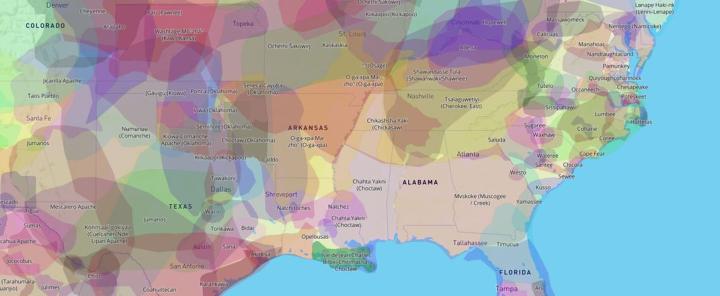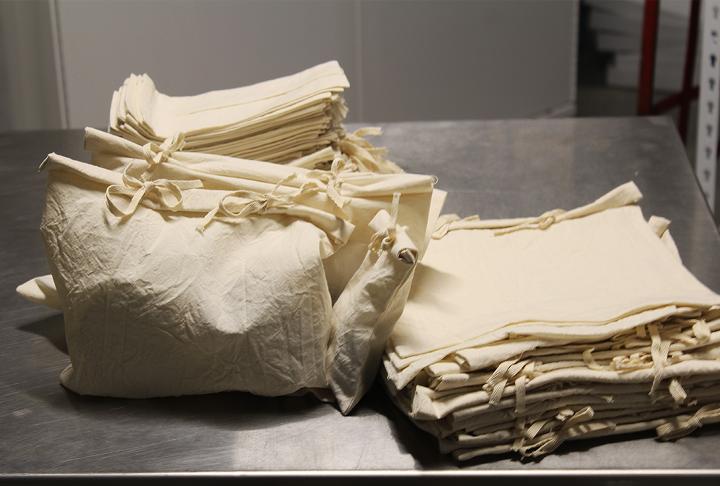 |
Canku Ota
|
 |
|
(Many Paths)
|
||
|
An Online Newsletter
Celebrating Native America
|
||
|
April 2021 - Volume
19 Number 4
|
||
|
|
||
|
Mississippi Returns
Hundreds of Native Americans' Remains to Chickasaw Nation
|
||
|
by Nora McGreevy - SMITHSONIANMAG.COM
|
||
|
Decades after their
bones were placed in storage, the state has repatriated the remains
of 403 Indigenous ancestors
Between 750 and 1,800 years ago, hundreds of Native Americans in what is now the northern Mississippi Delta region were buried alongside their kin and pet dogs in graves decorated with wolf teeth, beads, vases and turtle shells. Instead of remaining in the ground as their loved ones had intended, the deceased were eventually unearthed by archaeologists and placed in state storage, as Brian Broom reports for the Mississippi Clarion Ledger. Their remains sat on shelves in the Mississippi Department of Archives and History (MDAH) for decades. That injustice was finally rectified last month, when the department repatriated the remains of 403 Native American people, as well as 83 burial lots, to the Chickasaw Nation. Per a statement, the move marks the largest return of human remains in Mississippi since the passage of the Native American Graves Protection and Repatriation Act (NAGPRA) 31 years ago. "We see the repatriation process as an act of love," Amber Hood, director of historic preservation and repatriation for the Chickasaw Nation, tells the Associated Press' (AP) Leah Willingham. "These are our grandmothers, grandfathers, aunts, uncles and cousins from long ago."
As Hood adds in the statement, "Caring for our ancestors is extremely important to us." Signed into law in 1990, NAGPRA gives Native groups the legal right to reclaim their ancestors' remains, in addition to cultural objects held by federally funded institutions, according to the National Park Service. Before the 19th century, the Chickasaw Nation controlled land throughout western Tennessee and northern Mississippi. After President Andrew Jackson signed the Indian Removal Act in 1830, however, United States authorities forcibly removed the Chickasaw tribes to land west of the Mississippi River. The massive repatriation effort required more than two years of planning, reports Mississippi news station WLBT. The Chickasaw Nation advised the MDAH to transport the remains in muslin bags, which will eventually decompose after being buried in the ground. A crew of volunteers helped the MDAH hand sew the necessary bags at home during the Covid-19 pandemic, per the AP. "Volunteers knew they were helping in some ways to bring these people home, to put them to rest," Cook tells the AP. According to the Clarion Ledger, the Chickasaw Nation will rebury the remains in a ceremony held at an undisclosed location in Mississippi later this year.
The National Park Service tells the AP that nationwide, about 83,000 Native Americans' remains have been returned to their descendants since NAGPRA's passage. But at least 116,000 are still in storage in various cultural institutions. The remains of more than 1,000 individuals in Mississippi's state collections have yet to be identified and repatriated, per the AP. Those interested in tracking the state's progress with further repatriation efforts can visit the department's new, dedicated website. Meg Cook, MDAH's director of archaeology, tells the AP that repatriation is now the state archaeology collection's main priority. "We're doing everything that we can to reconcile the past and move forward, in a very transparent way," says Cook. "It is important to remember that these are people, buried with items with strong cultural ties to their communities, the same way that people today might be laid to rest wearing a wedding band," she adds in the statement. "While these artifacts inform the archaeological record, it is our ethical and legal obligation to see that they are returned."
Nora McGreevy is a freelance journalist based in Chicago. Her work has appeared in Wired, Washingtonian, the Boston Globe, South Bend Tribune, the New York Times and more. She can be reached through her website, noramcgreevy.com. |
||||||
|
|
|
|
||
|
|
||
| Canku Ota is a free Newsletter celebrating Native America, its traditions and accomplishments . We do not provide subscriber or visitor names to anyone. Some articles presented in Canku Ota may contain copyright material. We have received appropriate permissions for republishing any articles. Material appearing here is distributed without profit or monetary gain to those who have expressed an interest. This is in accordance with Title 17 U.S.C. Section 107. | ||
|
Canku Ota is a copyright ©
2000 - 2021 of Vicki Williams Barry and Paul Barry.
|
||
 |
 |
|
|
The "Canku
Ota - A Newsletter Celebrating Native America" web site and
its design is the
|
||
|
Copyright ©
1999 - 2021 of Paul C. Barry.
|
||
|
All Rights Reserved.
|
||


